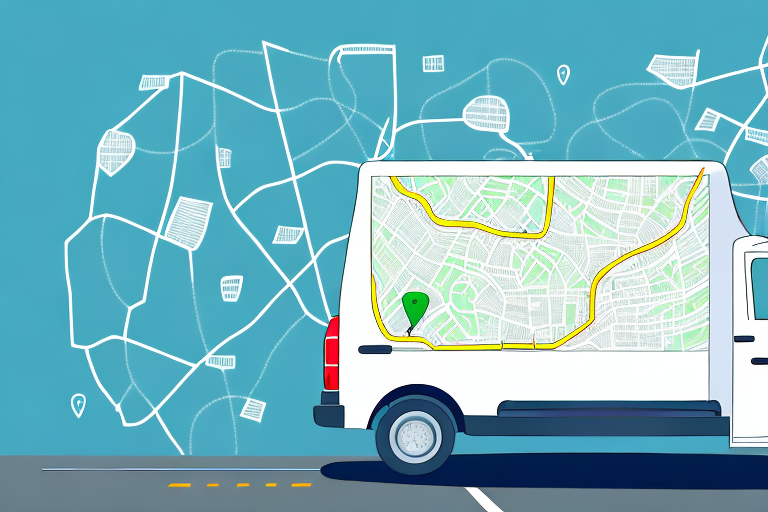How Much Should You Charge for Delivery Per Mile?
Delivery charges are a vital aspect of any business that provides transportation services. As a business owner, it is important to have a clear understanding of how to calculate the cost of delivery and balance the needs of your customers with the profit goals of your business. This article covers everything you need to know about setting appropriate delivery charges, including the factors that affect pricing decisions, competitive pricing strategies, common mistakes to avoid, best practices for communicating fees to customers, and more.
Understanding Delivery Charges
What Are Delivery Charges?
Delivery charges refer to the cost of transporting goods from one location to another. In the context of ecommerce businesses, delivery charges may also include costs associated with packaging, handling, and processing orders.
Calculation Methods
The cost of delivery can be calculated based on weight, volume, distance traveled, or a combination of these factors. A common method is to charge a flat fee per mile traveled, which we will focus on in this article.
Impact of Goods and Destination
Delivery charges can vary significantly depending on the type of goods being transported. For instance, shipping a small, lightweight item like a book is generally less costly than shipping a large, heavy item such as furniture. Additionally, international shipments typically incur higher costs compared to domestic ones.
Speed of Delivery
Expedited shipping options, such as overnight or two-day delivery, generally cost more than standard shipping options. Businesses must consider these factors when setting their delivery charges, as they can significantly impact the overall cost structure.
Factors Affecting Delivery Charges Per Mile
Key Considerations
- The size and weight of the items being delivered.
- The distance between the pickup and delivery locations.
- The mode of transportation used (e.g., truck, van, bicycle).
- The availability of drivers and vehicles.
- The level of demand for delivery services.
- The pricing strategies of competitors in the market.
Additional Influences
Delivery charges can also be affected by the time of day or day of the week. Higher demand periods, such as peak hours or weekends, may warrant higher charges. Furthermore, different types of delivery services, such as same-day or rush deliveries, typically incur additional costs due to the urgency and resources required.
Calculating Delivery Costs Per Mile
Step-by-Step Calculation
- Determine Total Operating Costs: Include all expenses related to maintaining and operating vehicles, paying drivers, purchasing fuel, and other associated costs.
- Break Down Cost Per Mile: Divide the total cost by the number of miles traveled over a specific period (e.g., monthly or annually) to determine the cost per mile.
- Add a Profit Markup: Incorporate a markup to ensure profitability. This should consider competitive pressures and desired profit margins.
Monitoring and Adjusting Prices
Delivery costs may fluctuate based on distance, time of day, and other factors. Regularly monitor pricing and make adjustments as necessary to remain competitive in the market.
Competitive Pricing Strategies
Analyzing Competitors
Understanding competitors' pricing is crucial. Pricing too high can lead to loss of business, while pricing too low can squeeze profit margins.
Pricing Approaches
- Matching or Undercutting: Align your prices with or slightly below competitors to attract customers.
- Value-Based Pricing: Justify higher costs by offering superior services such as faster delivery times or customized options.
Staying Competitive
Continuously monitor the market and adjust your prices to stay competitive and meet profit goals.
Analyzing Business Costs
Key Expense Categories
- Vehicle Costs: Purchase or lease costs, maintenance, and repairs.
- Driver Salaries and Benefits: Including salaries, benefits, and workers' compensation.
- Fuel Costs: Fluctuating fuel prices can significantly impact overall costs.
- Packaging and Handling: Costs associated with packaging materials and handling orders.
Determining Appropriate Charges
Once expenses are understood, set delivery charges that allow for profitability while remaining competitive.
Balancing Profit and Customer Satisfaction
Offering Multiple Delivery Options
Provide a variety of delivery options to cater to different customer needs and budgets. For example, offer premium services with guaranteed delivery times and budget options with longer delivery times at lower costs.
Customer Value Perception
Ensure customers feel they are receiving value for their money by balancing profit goals with high-quality service.
Adjusting Prices for Seasonal Changes
Understanding Seasonal Impacts
Demand for delivery services can fluctuate seasonally. For instance, holiday seasons often see increased demand, necessitating higher prices to manage resource strain.
Strategic Pricing Adjustments
During slower periods, consider lowering prices to attract more customers, ensuring prices remain competitive and profitable throughout the year.
Setting Delivery Fees for Ecommerce Businesses
Common Pricing Models
- Flat Rate Fees: Charge a fixed shipping and handling fee for all orders, simplifying the pricing process for customers.
- Free Shipping: Attract customers by offering free shipping, while carefully managing costs to maintain profitability.
- Weight-Based Pricing: Charge based on the weight of items, transparently passing shipping and handling costs to customers.
Choosing the Right Model
Select a pricing model that aligns with your business operations and customer expectations to optimize both sales and profitability.
Communicating Delivery Charges to Customers
Best Practices
- Clearly display delivery fees on your website and in promotional materials.
- Be transparent about any additional fees, such as handling or packaging costs.
- Regularly update pricing to reflect changes in costs or market conditions.
- Provide customers with multiple delivery options, each with corresponding fees.
Building Trust
Transparency in delivery charges fosters trust and can enhance customer satisfaction and loyalty.
Impact of Delivery Charges on Customer Retention
Customer Loyalty
Competitive and transparent delivery charges can improve customer retention and loyalty. Conversely, excessive charges may lead to customer churn.
Long-Term Benefits
Regularly evaluating and adjusting delivery charges to stay competitive helps maintain a loyal customer base and supports long-term business success.
Common Mistakes in Setting Delivery Prices
Avoiding Pitfalls
- Miscalculating the costs of operating a delivery service.
- Charging excessively high fees that deter customers.
- Setting fees too low, undercutting profit margins.
- Ignoring competitive pricing strategies.
- Failing to update prices in response to cost or market changes.
Ensuring Accuracy
Carefully calculate costs and consider market factors to set delivery prices that are both competitive and profitable.
Case Studies: Successful Delivery Pricing Strategies
Learning from Leaders
- Amazon: Offers free shipping for Prime members, while non-Prime members pay per-order delivery fees.
- Postmates: Implements variable delivery fees based on distance and time of day.
- Uber Eats: Charges a flat-rate delivery fee with higher rates during peak times.
- Blue Apron: Incorporates delivery fees into the cost of meal kit subscriptions.
Applying Insights
Study these successful businesses to gain insights into effective pricing models that can be adapted to your own delivery service.
Future Trends in Delivery Pricing Per Mile
Emerging Technologies
The increasing use of drones and unmanned vehicles for deliveries may necessitate new pricing models to account for unique operational costs.
Environmental Regulations
Stricter environmental regulations could impact fuel costs, affecting delivery pricing for businesses reliant on traditional vehicles.
Growth of Ecommerce
The continued expansion of ecommerce drives demand for delivery services, influencing pricing and the availability of delivery providers.
Adapting to Trends
Stay informed about these trends and adjust your pricing strategies accordingly to remain competitive and profitable in the evolving delivery landscape.




















